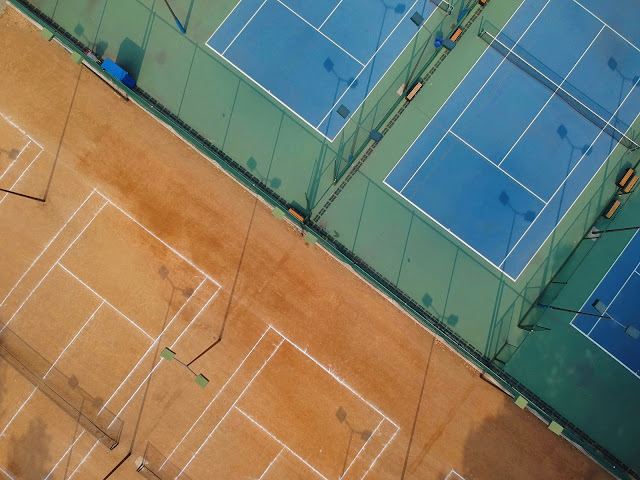How Do Tennis Court Surfaces Differ?
If you’re familiar with tennis, you may have noticed how a variety of different playing surfaces are used for different tournaments. You may also be aware of the fact that, historically, some pro players seemed to fare better on certain surfaces than others.
Spanish pro Rafael Nadal for example, is often referred to as the ‘King of Clay’. This is because he has more French Open titles (14) than any other player. The French Open is a tournament held every year, that is played on a clay surface. Roger Federer, despite being a fantastic all-arounder, arguably enjoyed more success on grass than any other pro. You just knew watching him at Wimbledon in the summer was going to be a delight, and he certainly rarely disappointed.
But which surfaces are used in tennis, how do they differ, and do they really make that much of a difference? Let’s take a look.
Grass Surfaces
Traditionally, when people think of tennis, they think of grass surfaces. That’s hardly surprising considering the sport used to be played on grass gardens and lawns of British aristocrats and was commonly referred to as ‘lawn tennis’.
Many consider Wimbledon to be the most prestigious of all tennis Grand Slam tournaments, and this is held on grass courts every summer.
Grass surfaces are either a tennis player’s best friend, or worst nightmare. The surface is slippery so getting your footing can be tricky. Because of the slippery surface, the ball also doesn’t bounce as high as on harder surfaces. It can also bounce erratically, while still maintaining a lot of speed.
Most grass surfaces are also outdoors, so humidity and rain can be an issue and can make things even slipperier. Wimbledon does have two courts with retractable roofs for times when the British summer rain inevitably makes an appearance, but even so, humidity can also be a factor.
Matches held on grass are therefore fast-paced and require good footwork as well as accuracy and control. If you consider your serve and/or your volley a strong part of your game, a grass surface will, pardon the pun, serve your style of play very well.
Clay Surfaces
Clay courts in grand slams, are less common than hard courts. In fact, the only Grand Slam to be played on clay is the French Open.
Clay is a soft surface made from tightly packed crushed brick with a layer of mineral aggregate on the surface. Red clay courts, like the ones seen at the French Open, are most common, especially across South America and Europe.
Because of the surface, tennis balls generally bounce much higher on clay. This can slow down and dictate the pace, resulting in longer rallies. The ball’s speed is also slowed down. Players also need to have great cardiovascular endurance. The good thing is that clay offers much better grip than grass.
Players that are able to put a lot of spin on their shots generally do well on clay. Nadal for example, is able to generate more spin on his shots than arguably anybody else in the sport. Considering he’s known as the 'King of Clay' you can see why this is beneficial.
Hard Surfaces
Finally, we have hard courts.
Most tennis courts seen in homes, and local parks, will be hard courts. In fact, the surface is hugely popular all over the globe.
Usually, a hard tennis court is made from acrylic or synthetic layers of material placed upon a foundation of asphalt or concrete. Both the Australian Open and the US Open are played on hard surfaces. As the surface is so hard, the ball bounces much higher than on grass. The ball’s speed is also reduced, though is still generally faster than on clay.
These courts are the most balanced and therefore suit a more all-round style of play, like you’d see with players such as Novak Djokovic or Serena Williams, as her powerful style of play really lent itself well to hard surfaces.
